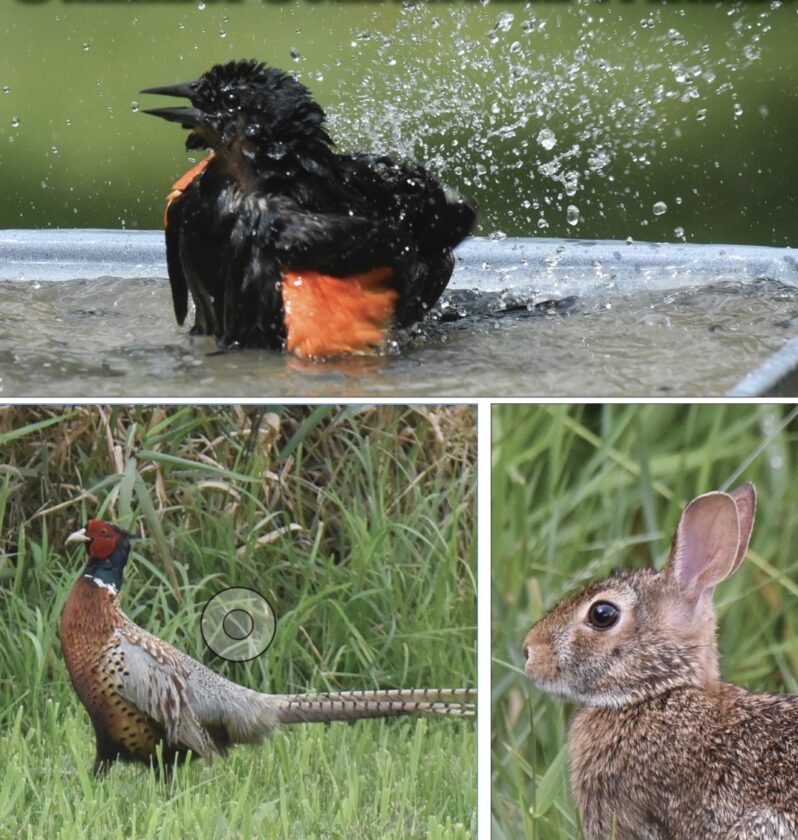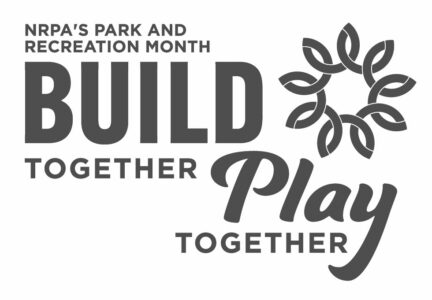Summer sensational wildlife

PHOTOS BY GARRY BRANDENBURG During the heat of the summer season, wildlife populations are well on their way to having new families raised and prospering. One way the Iowa Department of Natural Resources makes inventory of several common wildlife species is by conducting specialized roadside count routes. These standard routes, each 30 miles long, have been in effect since 1962. The value of standard routes is that the only thing changing is how adjacent land uses fluctuate from year to year across the state of Iowa. There are 225 routes designated between the Mississippi and Missouri Rivers, and between Minnesota and Missouri borders. As for summer time heat escapes, the red-winged blackbird shows us how to cool off by splashing in bird bath water.
Summer census time is happening now for several common Iowa wildlife species. Roadside counts will soon get underway between Aug. 1-15.
Spotlight surveys in the dark of night by conservation officers to locate deer are another means to help gauge those species. Citizen reports of pheasant and wild turkey broods observed are also helpful indicators.
These sightings plus known weather conditions last winter, spring and right now during summer are factored in. Long term data and trends of these common animals will be made and published in early September.
While right now may be mid summer season, fall is not very far away. Shorter days and eventually cooler air temperatures will arrive. In the meantime, we humans have to adapt to the realities of summer heat.
That is just the way it is for Iowa and many places in the Midwest. Nature is what nature is. Learning to adapt and like it goes with our choices of where to live.
Roadside counts by DNR biologists and conservation officers have been conducted on standard routes since 1962. As noted in the photo information, each of 225 routes is 30 miles long. Across Iowa these routes are located on a wide variety of habitats with all kinds of adjacent land uses. Lots has changed since 1962 in the way Iowa lands are farmed, types of crops raised, livestock fed, grassland habitats established or removed, plus inevitable fluctuations of weather events.
However, 1962 was a long time ago. Comparing every year since then up to our current time helps to average out the time line of how wildlife adapts. Pheasants, partridge, quail, cottontail or jack rabbits observed will be noted on the report forms.
Hen pheasants and their new broods of young are and will remain the prime focus by the counter personnel. Hens will likely be along roadsides in early mornings after a night of heavy dew.
The birds want to dry off their wet feathers. That is when counting is easier to conduct.
According to Todd Bogenschutz, DNR Upland Wildlife Biologist with the Iowa DNR, some base line data to make upland game predictions can be forecast by weather models based on snowfall, rainfall and temperatures from the past winter and spring. That data is helpful, kind of a best guess to make on or about June 1. Now add more data from roadside counts and other survey methods, to round out and make more precise forecasts of pheasants, quail, partridge, rabbits and other critters.
In the ‘other critter’ comment lines of the roadside survey will be anything else that happens to make a random appearance. That could be a very quick glimpse of a coyote crossing the road, or eagles perched in a big tree, or mink, foxes or a badger at the instant when surveyor eyes were looking.
Results of the August roadside survey will be posted online at www.iowadnr.gov/pheasantsurvey in early September. And a reminder to bird hunters is this: that Iowa pheasant hunting season, the 100th anniversary, will begin Oct. 25, 2025. Iowa rabbit and squirrel season opens Aug. 30.
——————
Banquet seasons for people to help raise funds for wildlife related organizations are always happening somewhere. A case in point is the event by the Tama County Tom Stompers, a local chapter of the National Wild Turkey Federation for Tama County.
Their event will happen on Sept. 6, 2025 at the Tama Ballroom, 1411 E. 5th St., Tama, IA. The ticket contact person is Shane White by calling him at 641-484-0722, or send a check to Shane White at 3843 T Avenue, Chelsea, IA 52215.
Tickets costs begin at $50 per individual, or $70 per couple. Youth ages 17 or under are admitted for $20. There are other sponsorship levels if so inclined to pony up the dollars for a table of bronze, silver, gold or platinum status.
The National Wild Turkey Federation has been the cornerstone for wild turkey restoration efforts since their incorporation in 1973. Habitat restoration work is one focus.
Assisting in some wild lands acquisitions is another across America. Wild turkey biology and the conservation efforts are dynamic and changing.
There are the ups and downs of some area turkey populations. Trying to figure out the reasons for these cyclical changes is a mystery worth solving, if it can be, to make habitats that are long lasting for all upland wild game birds or mammals.
Wild Turkey Federation dollars are typically used to help leverage other monies on a 4 to 1 ratio, meaning that for every dollar raised at local banquets, the NWTF can turn it into $4, sometimes even more! Also remember that the NWTF is a non-partisan organization that supports science-based measures and legislation.
——————
Rain events during July 2025 at this author’s home in Albion have proven to be a bit more than adequate. From years of dry conditions to a “wet” July in 2025, the tide seems to have turned. This month is not over and knowing Mother Nature, we do not want to make her mad. She always wins her poker game of surprises.
So far in Albion, my rain gauge has collected a total of 8.56 inches of sky water. For the year total, I have recorded 21.83 inches so far.
An average growing season rain total is about 30 inches. So, all in all, the rains have been timely, and as always, the distribution of rain across Iowa is never equal everywhere.
That is the reality of weather systems illustrating the chaotic interplay of our atmosphere of air, winds, and high and low pressure systems.
.
——————
The IOWA RIVER is just one indicator of accumulated rainfall events. We have seen a few bank full flow times so far in 2025 after a previous steady low flow condition.
The last high water event happened on July 21 when the river crested at noon time at 17.41 feet. To put the river’s water flow in perspective, a very low flow rate of 10 feet is equivalent to ankle deep water at Timmons Grove County Park.
So a bit of simple math means a stage of 17.41, feet minus 10 feet, equals 7.41 feet of new water depth at the most recent crest. The all-time highest crest took place on July 2, 2014 at Marshalltown.
The flood waters crested at a stage height of 22.25 feet. That is about five feet more flow depth than now.
Those flood conditions closed local and state roadways in many places. Mother Nature played her poker hand big time in 2014.
She won. We lost.
——————
Garry Brandenburg is the retired director of the Marshall County Conservation Board. He is a graduate of Iowa State University with a BS degree in Fish & Wildlife Biology.
Contact him at:
P.O. Box 96
Albion, IA 50005



